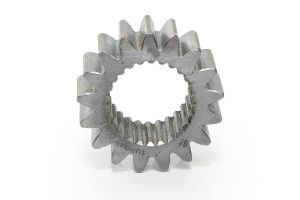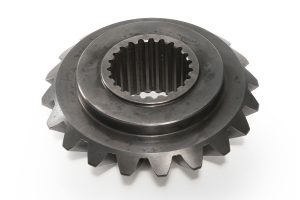Internal gears, also known as ring gears or internal spur gears, have teeth on the inside of a cylindrical shape. They are used in a variety of mechanical applications where they engage an external gear to transmit motion and power.
As internal gears, 10 modules Ø1000mm, ring and planetary gears are manufactured. In gear manufacturing, Ç8620-16 MnCr5-Ç3313 semantation steels are used as noble steel from certified materials and liquid and gas cementation is performed.
The materials used for internal gears are similar to those used for other gear types and depend on the application. Common materials include steel, cast iron, brass, bronze, stainless steel and plastic polymers. The choice of material is based on factors such as load, speed and environmental conditions.
Internal Gears are typically manufactured from a variety of materials, including
- Steel: Common for its strength and durability. Alloy steels are often chosen for high load applications.
- Cast Iron: Known for its damping properties, suitable for medium load applications.
- Brass Used when quiet operation is required, such as in precision instruments.
- Bronze: Offers good wear resistance and corrosion resistance, suitable for marine applications.
- Stainless Steel: Ideal for applications where corrosion resistance is required, such as food processing.
- Plastic (Polymer): Polymers such as nylon, acetal and PEEK are used in lightweight, low-load applications where noise reduction is important.
The principle of operation of internal gears involves the meshing of an internal gear and an external gear. When the outer gear (pinion) rotates, its teeth engage the teeth of the inner gear, causing it to rotate in the opposite direction. The meshing of the gear teeth allows rotational motion and torque to be transmitted between the gears. Internal gears are often used in planetary gear systems, where multiple internal gears work together with a central sun gear to achieve various speed and torque ratios.





